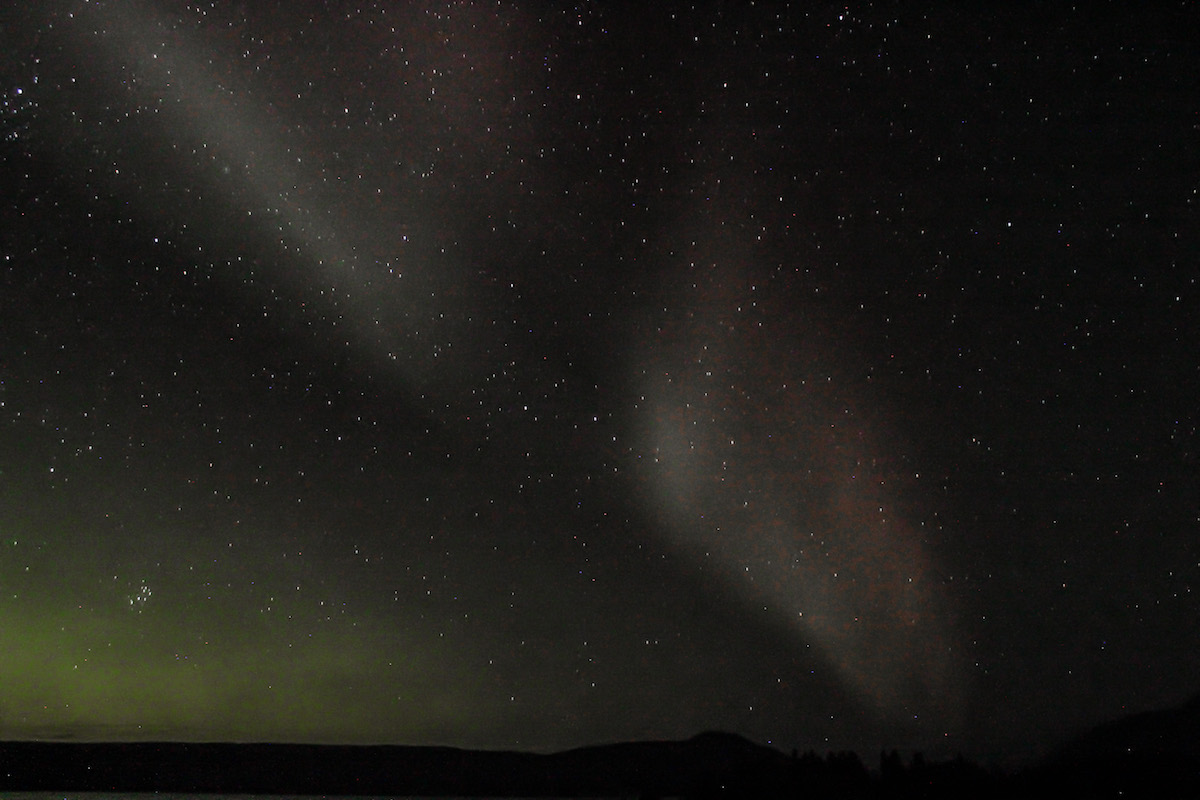I stare out from the Lower Platform in disbelief. It is past midnight on one the first truly clear nights that we have had over Katmai National Park since we have had a "night." After months of seemingly perpetual sunlight overpowering the light of things light years away (one light year is about 6 million-million miles from Earth) I can finally see the stars again.
The view overhead is one I am very familiar with. Being from the desert southwest, I have a strong connection with some of the most pure night skies in the United States, a diminishing resource as we develop more and more. The return of night has been like a reunion with friends as the stars I am so familiar with glimmer for eternity. The names of constellations like Cassiopeia, Ursa Major (great bear, how fitting for Katmai,), and Gemini all illustrate how people from thousands of years ago have connected with the same stars I can see.

The Milky Way is a clear sign of a quality night sky. NPS Photo/ S. Chandler
And yet before me is something mind bogglingly different. It seems to resemble the light pollution of a large city, despite being hundreds of miles from a city that doesn't waste much light (compared to lower 48 cities,) and its difference doesn't stop there. This expands and shrinks, glimmers and dims. Oh yeah, my simple eyes see it as grey in the black, but my camera captures this glow as green.

Looking northward, The Aurora Borealis appears as a green cloud on the horizon. NPS Photo/ S. Chandler
I am seeing The Aurora Borealis, The Northern Lights. The combination of solar winds, our magnetic fields, gasses miles away from the planet's surface, and the energy of electrons create something in our night sky that is NOT CONSTANT. Northern cultures have polarized this dynamic phenomenon as far as history goes, likely even beyond that. Some feared the lights as the open path from life to death, others considered them the energies of playing spirits. Regardless, this is something that occurs under certain conditions, something that can be missed, something in the seemingly constant sky that not everyone can see.
Something catches my eye to the east. What looks like a plume of smoke is rising over the mountains. It rises and rises, rising so far that it arcs over my head and disappears over Dumpling Mountain. This isn't smoke. It waves, it seems to shimmer. I snap some pictures. This dynamic band is red and purple. Instead of looking through auroras that are miles tall, hundreds of miles away, I am looking at one directly overhead.
Watching the play of light across the sky I am speechless. No one is around to share wonderful exclamations with anyway. With all its sunlight, overcast skies, and access issues, Katmai National Park is not a dark sky destination. Most people wanting to see the skies afforded by darkness go elsewhere. Aurora chasers stay further north where much more powerful auroras (ones where you don't need a camera to see the color) are more plentiful. That makes this night all the more magical. This view is special, while someone elsewhere else could be seeing the same stars I can see, they aren't seeing this aurora. I am simultaneously watching something temporary and something timeless. How anyone could look up at this sky and not be amazed, or even humbled, is beyond me.

Auroras closer to the viewer can appear as waving bands of color. NPS Photo/ S. Chandler
The band overhead fades, the glow on the horizon shrinks. The aurora is losing its energy. I'm left with the view I know so well. The stars gleam on as they have for ages. The moment of difference has passed, but the timelessness of the sky will continue on.
